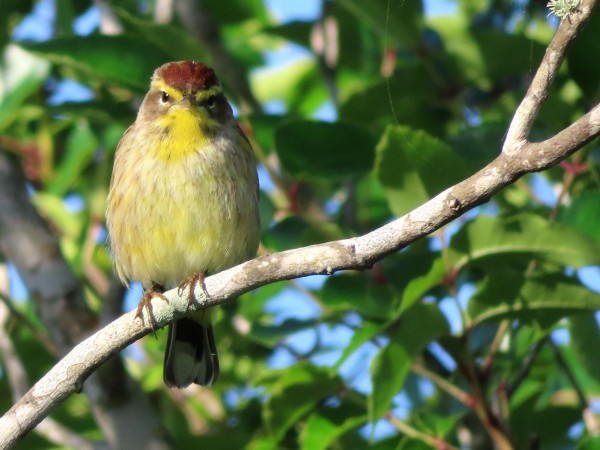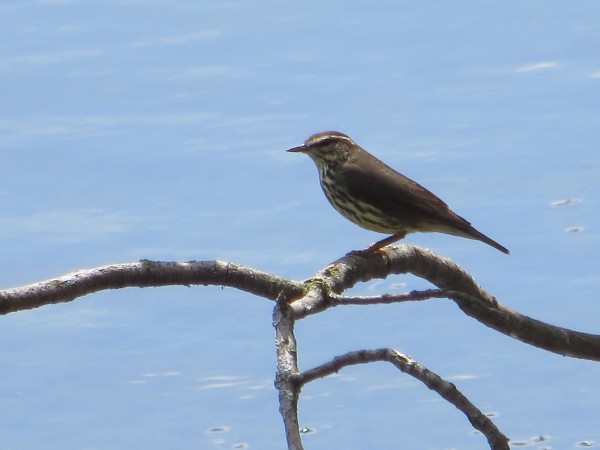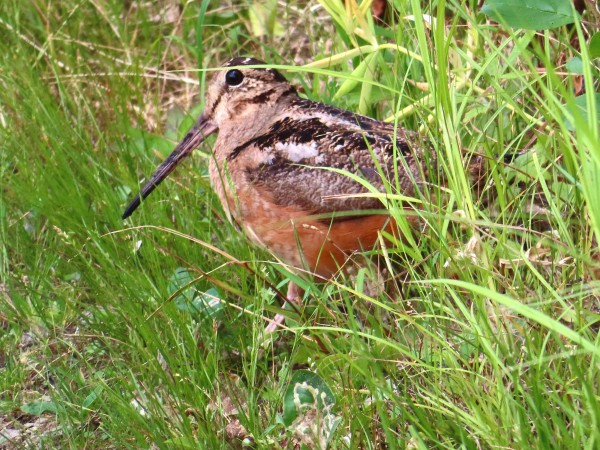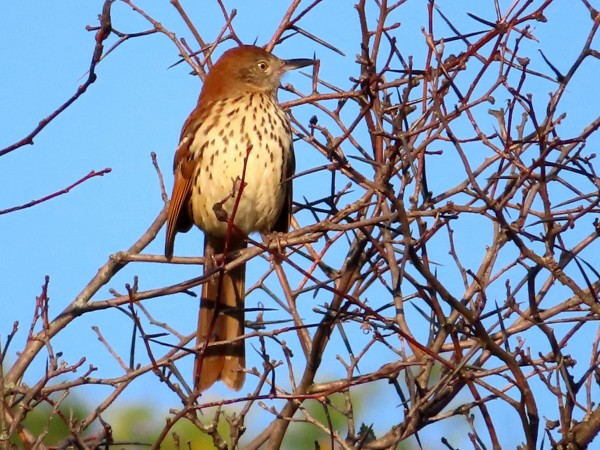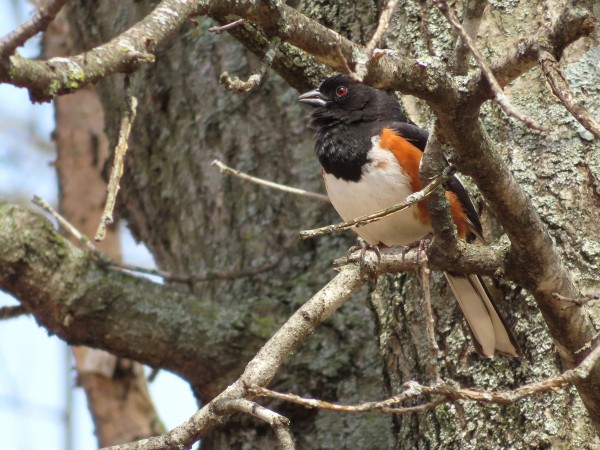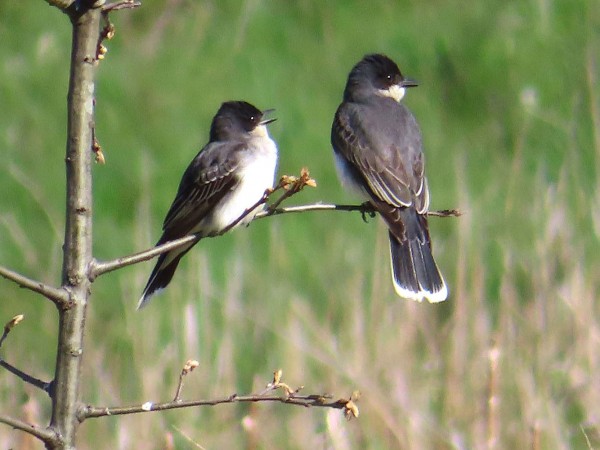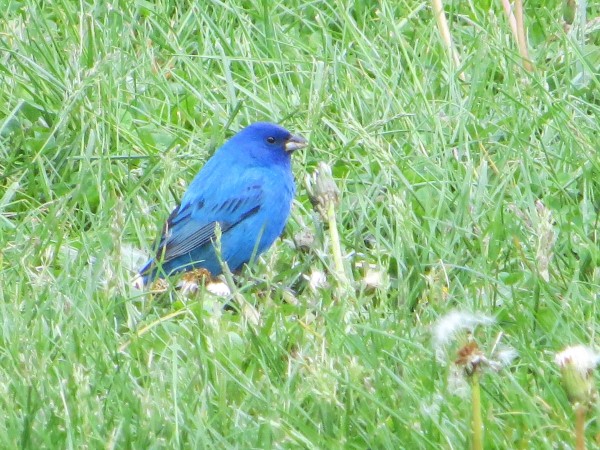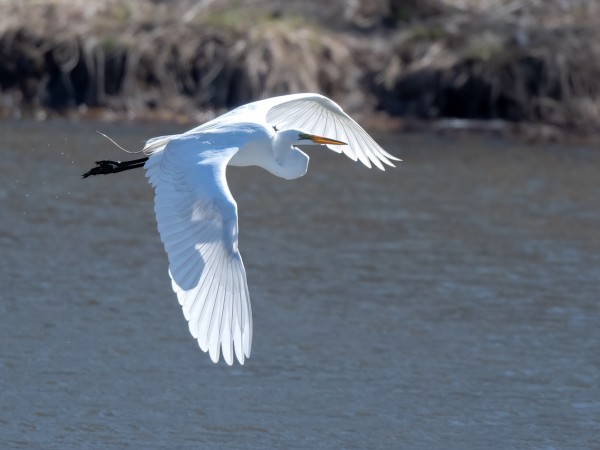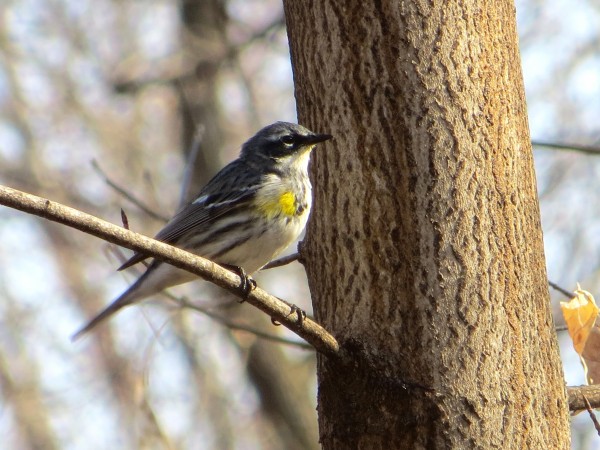Chuck's Birding Report #110
19 April - 25 April 2022
Dear fellow flock of birders,
Now here’s the description of the birds that I’ve seen during the past week mostly in the Arboretum. Let me first say that lots of new migrants came in over the weekend thinking that the weather was going to be nice and warm. Sorry birdies, this is Wisconsin.
The number of different species of warblers has really jumped. Here’s a list of different warblers that were seen around Dane County: Beside Yellow-rumped Warblers there were Palm Warblers, Yellow Warblers, Northern Waterthrush, Black and White Warblers, Orange-crowned Warblers, Nashville Warblers, Black-throated Green Warblers, Pine Warblers and Blackpoll Warblers. I’ve probably missed a couple but that’s a good start. These are just the first arrivals. There will be many more of the same species and new species to come. Remember we should be able to see about 30 species of warblers in the Arboretum or in Dane County. This morning on my walk in the Arb I saw 5 Palm Warblers and 1 Yellow Warbler. Both species were feeding on the ground in Longenecker Gardens. Photos of each are included.
I did see a Northern Waterthrush over a Lake Farm not far from the parking lot. I have not seen one yet in the Arb but when they arrive I often see them at Icke Boardwalk, Teal Pond, Pond 2 and at the southern end of Gardner Marsh. In all of these places they tend to walk along the edges of the water so when looking for them follow the edges of the shoreline. A photo of one is included.
On this morning’s walk I saw 10 Ruby-crowned Kinglets and no Golden-crowned Kinglets. The number of Ruby-crowned Kinglets has really increased making them more common than the Golden-crowned Kinglets.
Thursday evening from 7:45 to 8:45 I went to Curtis Prairie to see if I could hear and see the American Woodcocks. There were also about 20 others who had come to hear and possibly see the Woodcocks. At about 8:00 the Woodcocks began calling their nasal “peenting” sound. Those with good hearing could hear multiple Woodcocks calling. Try as I might I could only hear one and that’s because it was just off the path about ten feet away from me. We watched the sky toward the west to see if the males would fly up in a swirling fashion to impress the females. None of us saw them fly up. The other unusual feature of that evening was the number of other birds calling. The Wilson’s Snipes were making two different sounds. One was their winnowing sound and the other was the tick, tick tick sound. In addition the Wild Turkeys decided to get their two cents worth in by occasionally gobbling. It was definitely a cacophony of sound that I’ve never heard when I’ve looked for the American Woodcock before. Included is a photo of an American Woodcock I happened to see during the daytime. What luck!
Last Tuesday when I arrived for the bird walk early, as soon as I opened my car door I could hear the song or calling of a Brown Thrasher. They often perch at the top of a tree and call in doublets what they have to say. They can go on for a long time. They are striking. They are rusty colored on the back with a long rusty tail. They have a distinctive yellow iris. Their undersides are white with many spots and streaks. They have nested in the lilac trees in the past. They may again this year too. Included is a photo of the Brown Thrasher.
Another bird I saw today was an Eastern Towhee. It was on the ground under the blooming yellow Forsythia. Right now all the Forsythia are in full bloom. There are 2 or 3 rows of them at the northeastern end of Longenecker Gardens and they are gorgeous right now. The male Eastern Towhee is an impressive bird with black, white and rust colors for plumage. If you want to have a better chance of seeing them, go over to the Grady Tract because that’s where they breed and nest. A photo of the Eastern Towhee is included.
Two other birds I saw for the first time this year were the Eastern Kingbird and Indigo Bunting. The two Eastern Kingbirds were in the Crabapple Trees eating the remains of the crabapples from last summer. They are essentially a black and white bird. They are black above and white below. They have a black head and tail. The tail ends in the terminal white band. They are flycatchers when the insects are out and when they are catching insects in the air they flutter like a flycatcher. A photo of one is included.
The Indigo Bunting that I saw was on Longenecker Gardens. It was a male with an all indigo blue plumage. It is a beautiful color. It was feeding on the ground with 5 bright yellow, male American Goldfinches. The two contrasting colors made for an impressive photo. We had quite a few Indigo Bunting at the edge of Curtis Prairie last year. I hope they return this year. A photo of one is included.
My last photo was taken by Linda Deith who captured a Great Egret in flight near Spring Trail Pond or HoNeeUm. Up to six of them have been seen in that area for a couple weeks. They have white plumage with black legs and yellow beak. Thank you Linda for sharing your stunning photo of the Great Egret in flight.
That’s the Arboretum bird report for the past week.
I wish all of you good health and good spring birding too,
Chuck

